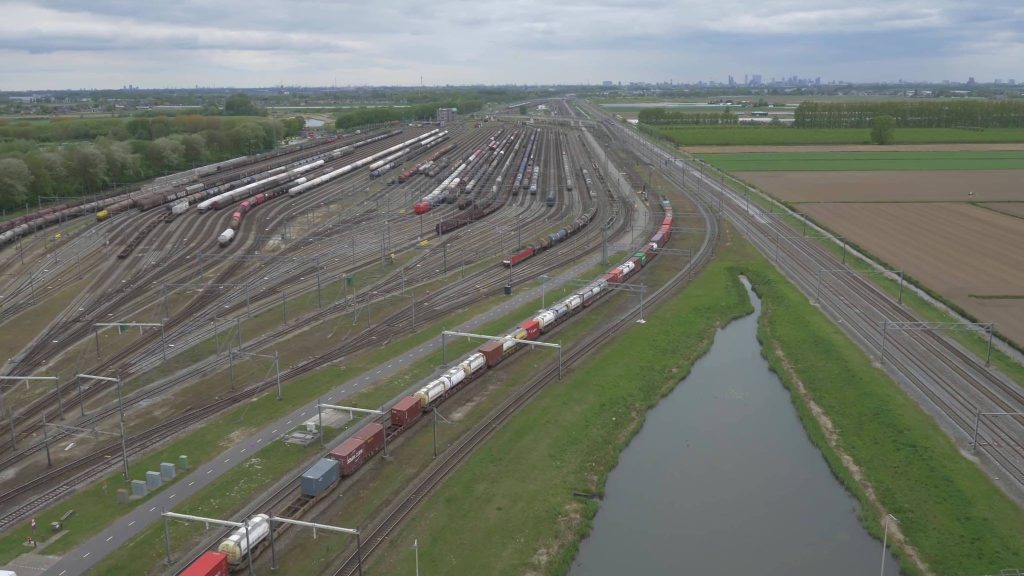 The EU targets to shift intermodal freight transport from road transport to rail and inland waterways in 2030 and 2050 are “simply unrealistic” and not based on robust simulations of how much modal shift could be achieved, a report released by the European Court of Auditors (ECA) on March 27, says.
The EU targets to shift intermodal freight transport from road transport to rail and inland waterways in 2030 and 2050 are “simply unrealistic” and not based on robust simulations of how much modal shift could be achieved, a report released by the European Court of Auditors (ECA) on March 27, says.
“Although intermodality is a key tool in that effort, the EU freight transport is not on the right
track,” Annemie Turtelboom, the ECA member who led the audit said.
The report finds that the “EU’s regulatory and financial support on intermodal freight transport was not sufficiently effective as there was still no level playing field for intermodal freight transport in the EU due to regulatory and infrastructure barriers”. Thus, the intermodal freight transport is not able “to compete on equal grounds with road transport”.
The auditors also argue that some EU rules inhibit the attractiveness of intermodal transport. The current version of the Combined Transport Directive is outdated (it dates back to 1992) and
ineffective and several attempts by the EC to revise the Directive did not find member states’ agreement. In the meantime, other EU regulatory provisions, particularly those governing road transport, sometimes go against the aim of incentivising intermodality.
Although the EU relied its policies on intermodality to shift freight traffic to sustainable modes of transport, there is no intermodal freight strategy to guide the Member States in one direction instead of their setting own target to increase rail freight transport share without aligning it with the EU.
The auditors also point out that the infrastructure is not yet fit for intermodal transport and the countries record delays in ensuring the compliance of infrastructure with technical requirements set by EU law. This also includes the longer train standard of 740m for example, but this achievement needs investment to improve and adapt the infrastructure and facilities and “would be one of the improvements with the highest cost-effectiveness in the effort to compete with road transport.”
One of the factors dissuading logistics operators from opting for intermodality was the lack of easily-accessible information on terminals and on real-time network capacities. While appropriate infrastructure is another key factor to enable intermodal transport, the Commission lacks an overview of the current terminals and of the terminals that still have to be built or upgraded to meet industry needs. The Commission’s 2021 proposal for revising TEN-T Regulation has the potential to improve the situation.
The report follows an audit carried out by ECA in seven member states – Croatia, France, Germany Italy, the Netherlands, Poland and Spain – analysing 16 projects that had received EU funding until 2020.
The ECA report makes four recommendations to the European Commission, which should:
- set targets regarding the modal share along the Core Network Corridors and
report on them; - prepare regulatory changes to improve the competitiveness of intermodal
transport; - lay the groundwork for a coordinated assessment by member states of
intermodal terminal needs; - assess the modal shift potential in cost-benefit analyses for EU-funded projects
The European Green Deal calls for a reduction of GHG emissions from transport of 90% by 2050 and the EC’s transport strategy proposes doubling rail traffic and increasing waterway use by 50%.
EU’s road freight transport accounts for 77% and is still on the rise as it is the most flexible mode for transporting freight, as it provides a door-to-door journey. For many types of goods, it is also often the fastest and cheapest way of delivering goods, even over long distances. On average and in the absence of support measures, intermodal freight transport is 56% more expensive than the road-only alternative. In contrast to road, other modes of transport, such as rail or inland waterways, are slower and less flexible.
The report says that in 2010, rail and inland waterways represented around 25 % of the total, and by 2020, their share had further decreased to below 23% by 2020.
Share on:



